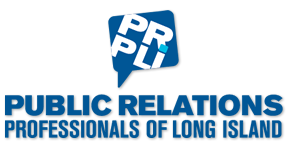On May 19, 2018, the royal wedding of Prince Harry and Meghan Markle captured our hearts and attention. In the midst of our troubled world, even an inkling of a real-life fairy tale warmed our hearts.
Many of us grew up reading fairy tales such as the Princess and the Pea. That was about a young woman whose royal identity is established by a test of her sensitivity to a pea placed under her bed. Written by Hans Christian Andersen, the story, which most likely originated from Sweden, first appeared as an inexpensive booklet on May 8, 1835, in Copenhagen. Andersen had first heard the folklore as a child.
In 2005, British children’s author Lauren Child published her remake of the tale. If reading bedtime stories to your children is part of your routine, you may be familiar with Child. She is also known for the Clarice Bean series.
You can actually tell someone’s age based on their answer to the question: “What was your favorite picture book?” It might be the Giving Tree or Where The Wild Things Are, but it’s probably not Don’t Let The Pigeon Drive the Bus! Mo Willems originally published that humorous pigeon story it in 2003.
When was the last time you read a picture book?
To yourself.
I’m not suggesting you do this to revert to childhood simplicity. I’m suggesting you do this to become a better writer.
As public relations professionals, people count on us to write well. Writing for children is not easy, and it encompasses many of the rules of solid writing. You must tell a story from beginning to end with a character arc, sensory words, minimal adjectives and adverbs, strong nouns and verbs, and a theme, and you must do this ideally in fewer than 500 words. You must say enough to give visual cues to an illustrator and yet not over explain. You must create a reason for your reader to turn the page, to get to the next scene. Many similarities exist between the art of writing picture books for kids and the art of screenwriting.
Still you may be asking yourself, how is this going to help me with my writing. Hmmmm. Your press releases and your pitches will be short and to the point. Your ad copy and your web copy will be strong in its messaging. Your speeches will become more compelling. Your thinking will become clear.
This summer when you have some leisure time, mosey on over to the picture book section of your library and read a few of the current ones, as well as the classics. Then pick up a copy of Strunk and White’s Elements of Style. It will remind you to “never use a long word when a short word will do.”
Our job is to keep the attention of our publics in a fast-paced, lack-of-attention, and text-addicted world. We can’t make up fairy tales, but we can sure spin a tale like Rumpelstiltskin.
Debra Scala Giokas is the marketing director at Certilman Balin. When not writing about and for lawyers, she’s writing for kids. Follow her on Twitter @debrascalag.
I’ve Been Short All My Life
“Writing is easy. All you do is stare at a blank sheet of paper until drops of blood form on your forehead.” – Journalist and author Gene Fowler
“I didn’t have time to write a short letter, so I wrote a long one instead.” – Mark Twain
The above quotes ring true to only those of us who have 1) stared as if in a trance at a blank piece of paper or computer screen thinking of fanciful ways to start a paragraph and 2) wanted to explain something simply, briefly, and beautifully.
As a longtime pencil press journalist, I’ve been asked to “write short” so many times I struggle to “write long.” There’s a place for long-form narrative but only if that narrative can’t be related in 350 words. Figuring out whether that’s so is why wordsmiths and editors walk around mumbling to themselves.
Though anecdotally we may think that our glance-first-and-think-later society has diminished human attention spans to mere seconds, it’s always a good practice to practice being short, but meaningfully short. That’s where this phrase should become your mantra: “writing is rewriting.”
As an adjunct on the journalism faculty at Stony Brook University, I repeat that phrase often, because students (and many adults) think the assignment is over when they get to the end of their essays.
The end is where the work begins.
In addition to combing the essay for factual, spelling, and grammar errors, anyone who writes should run through what they wrote at least seven times.
- Clean up sloppy grammar and spelling errors.
- Check your facts.
- Rewrite awkward phrases.
- Throw out unnecessary words and thought tangents.
- Trim sentences.
- Trim sentences.
- Read your work again, and then go back to Rule 1.
Press releases are no different. Hyperbolic headlines, exclamation-point lead paragraphs and manufactured quotes (yes, we can tell) are usually a red flag to a bad release. Stick with what’s new and real and you’ll get that shot you’re after.
George Giokas is chairman of the board of HealthDay, president/CEO of StaffWriters Plus, Inc., an adjunct professor at Stony Brook University’s journalism department, and author of the young adult novel Nickel Ice. His food blog is at nickelice.com.






